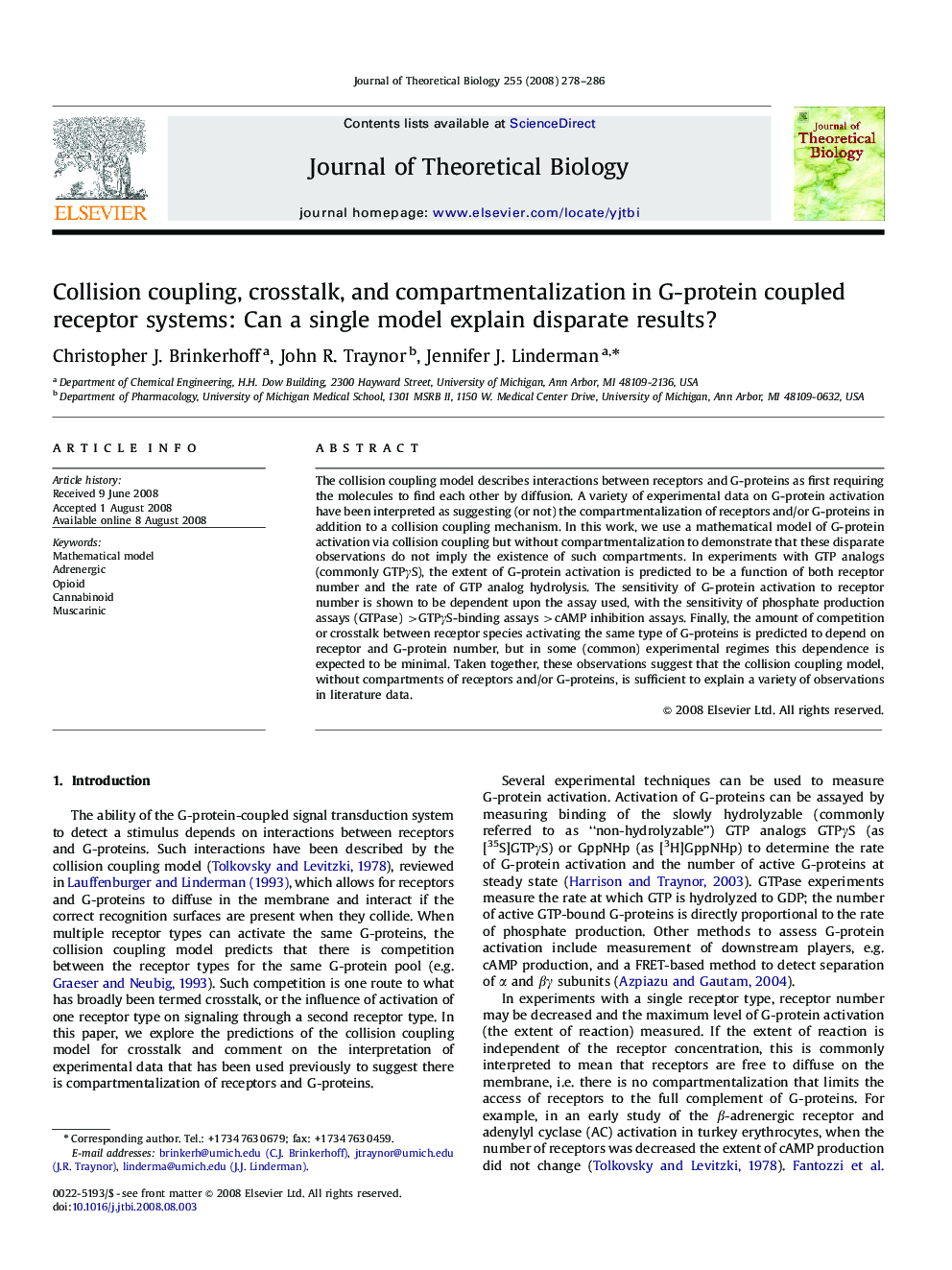| کد مقاله | کد نشریه | سال انتشار | مقاله انگلیسی | نسخه تمام متن |
|---|---|---|---|---|
| 4498197 | 1318969 | 2008 | 9 صفحه PDF | دانلود رایگان |

The collision coupling model describes interactions between receptors and G-proteins as first requiring the molecules to find each other by diffusion. A variety of experimental data on G-protein activation have been interpreted as suggesting (or not) the compartmentalization of receptors and/or G-proteins in addition to a collision coupling mechanism. In this work, we use a mathematical model of G-protein activation via collision coupling but without compartmentalization to demonstrate that these disparate observations do not imply the existence of such compartments. In experiments with GTP analogs (commonly GTPγS), the extent of G-protein activation is predicted to be a function of both receptor number and the rate of GTP analog hydrolysis. The sensitivity of G-protein activation to receptor number is shown to be dependent upon the assay used, with the sensitivity of phosphate production assays (GTPase) >GTPγS-binding assays >cAMP inhibition assays. Finally, the amount of competition or crosstalk between receptor species activating the same type of G-proteins is predicted to depend on receptor and G-protein number, but in some (common) experimental regimes this dependence is expected to be minimal. Taken together, these observations suggest that the collision coupling model, without compartments of receptors and/or G-proteins, is sufficient to explain a variety of observations in literature data.
Journal: Journal of Theoretical Biology - Volume 255, Issue 3, 7 December 2008, Pages 278–286